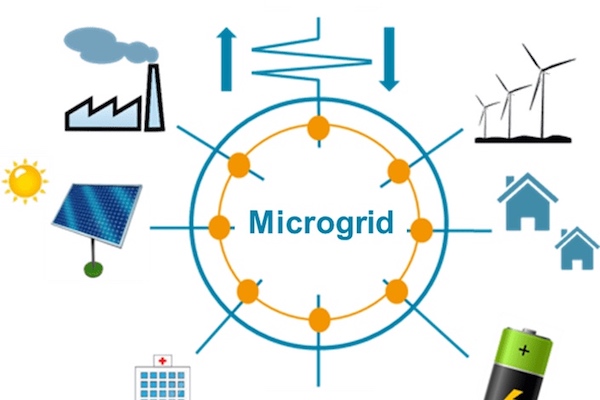From Guest Blogger Emily Folk: How Waste-To-Energy Can Enable Microgrids

Remote microgrids are often utilized in areas that are more subject to disaster or emergency circumstances. For example, after Hurricane Maria, microgrids were set up in Puerto Rico. Grid-connected microgrids can be connected to the main grid when needed, and allow an area to use the microgrid as a back-up energy source in certain situations.
Waste-to-energy microgrids are capable of transforming waste into electrical and thermal power, and can be utilized in a remote or grid-connected capacity. The infrastructure of waste-to-energy technology not only provides emergency coverage as a back-up energy source, but it is also powerful enough to fulfill local demand while reducing operational costs.
Fulfill Local Demand
Waste-to-energy microgrid technology allows municipalities to use local energy sources to power local areas. While this sounds like an obvious solution, it is important to remember that many waste-to-energy plants generate power that is used outside of the grid. Incorporating a waste-to-energy microgrid keeps the power generated from waste-to-energy plants to remain local, instead of being shipped elsewhere.
There are many benefits of utilizing a centrally located waste-to-energy microgrid. Not only would it reduce pressure on the grid, but it would also provide necessary back-up support for institutions like hospitals in emergency power shortages.
Reduce Operating Costs
Large fluctuations in demand can render regional grids extremely ineffective. All types of microgrids collect energy on-site and can store and regulate energy, which balance fluctuations based on demand. Because utility companies don’t have to worry about unknown potential costs, especially in emergencies, the operating costs of the operation are much lower than a regular grid set-up.
Waste-to-energy microgrids can also utilize renewable forms of energy and can work in conjunction with solar and wind technology to generate electricity. By setting up these systems to work together, the cost of incorporating renewable energy is much more manageable than installing separate systems.
Provide Emergency Coverage
Although it has been mentioned before, waste-to-energy microgrids can provide emergency coverage, making them extremely resilient in the face of disaster. The technology can be integrating into a larger grid system, or operate independently when necessary, providing energy to critical infrastructures like fire departments and wastewater treatment centers.
In addition, waste-to-energy plants enable microgrids to harvest local energy from collected resources, rather than relying on the supply of a regional grid. This system is much more resilient and diverse than a larger and more standard grid.
Waste-to-Energy and Microgrids
More municipalities are seeking ways to diversify their utilities, including their reliance on a single energy grid. Most developed areas depend on one large grid for electricity, a system that is increasingly vulnerable in the face of climate change. When it comes to innovating these energy systems, waste-to-energy technology may play an important role.
In the face of climate change and the likelihood of more weather-related emergencies, waste-to-energy technology may play a vital part in building energy independence in urban areas. Utilizing the waste collected from local municipalities to provide energy for the same places keeps the energy local, rather than exporting it elsewhere. Not only is this a more efficient system in general, but it also reduces operational costs.
While waste-to-energy technology is always adapting and innovating, it is safe to say that waste-to-energy plants will play a pivotal role in how municipalities harness local energy. As more regions seek to incorporate microgrids as a resilient and low-carbon solution, waste-to-energy will play a key part.
